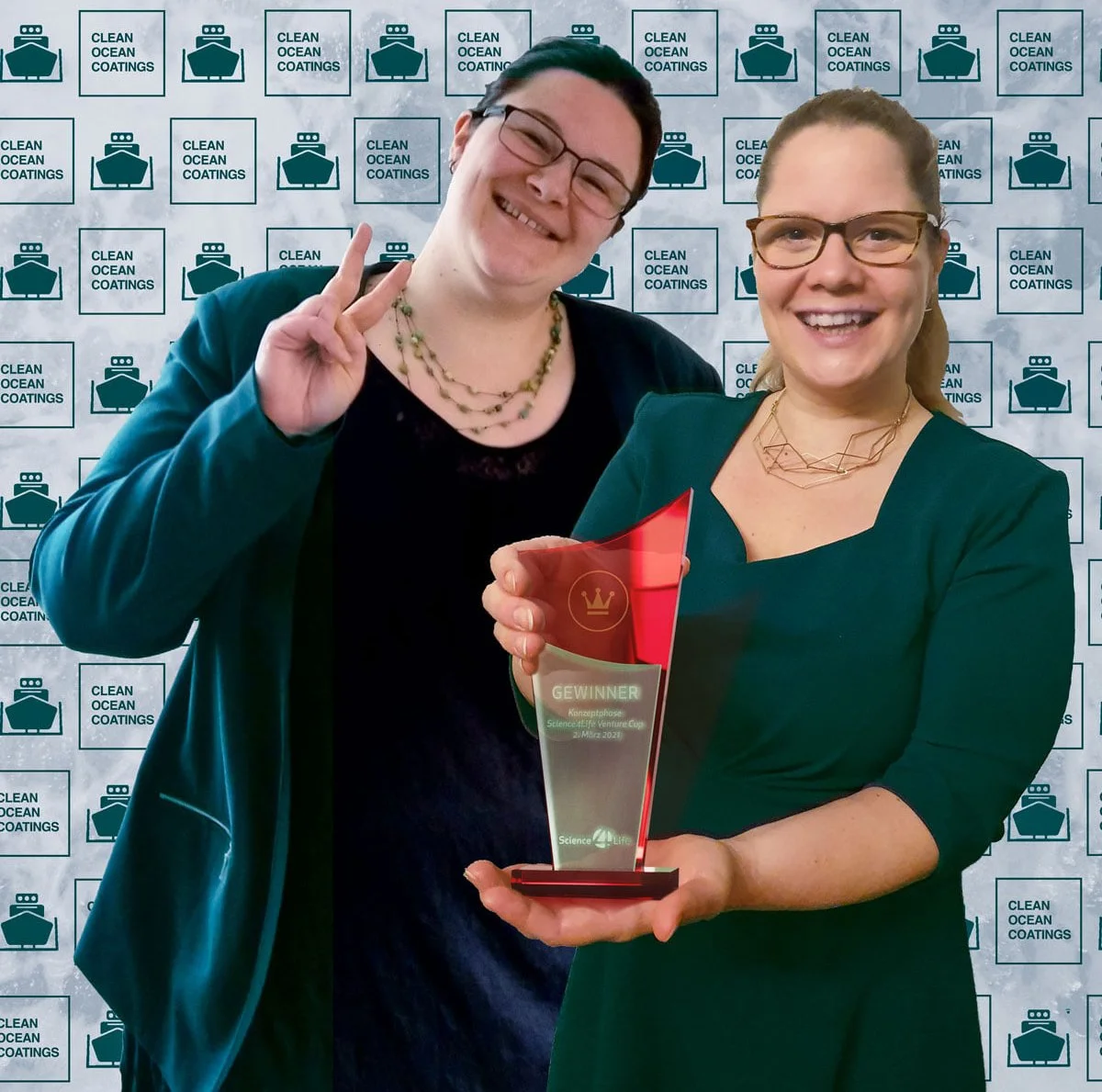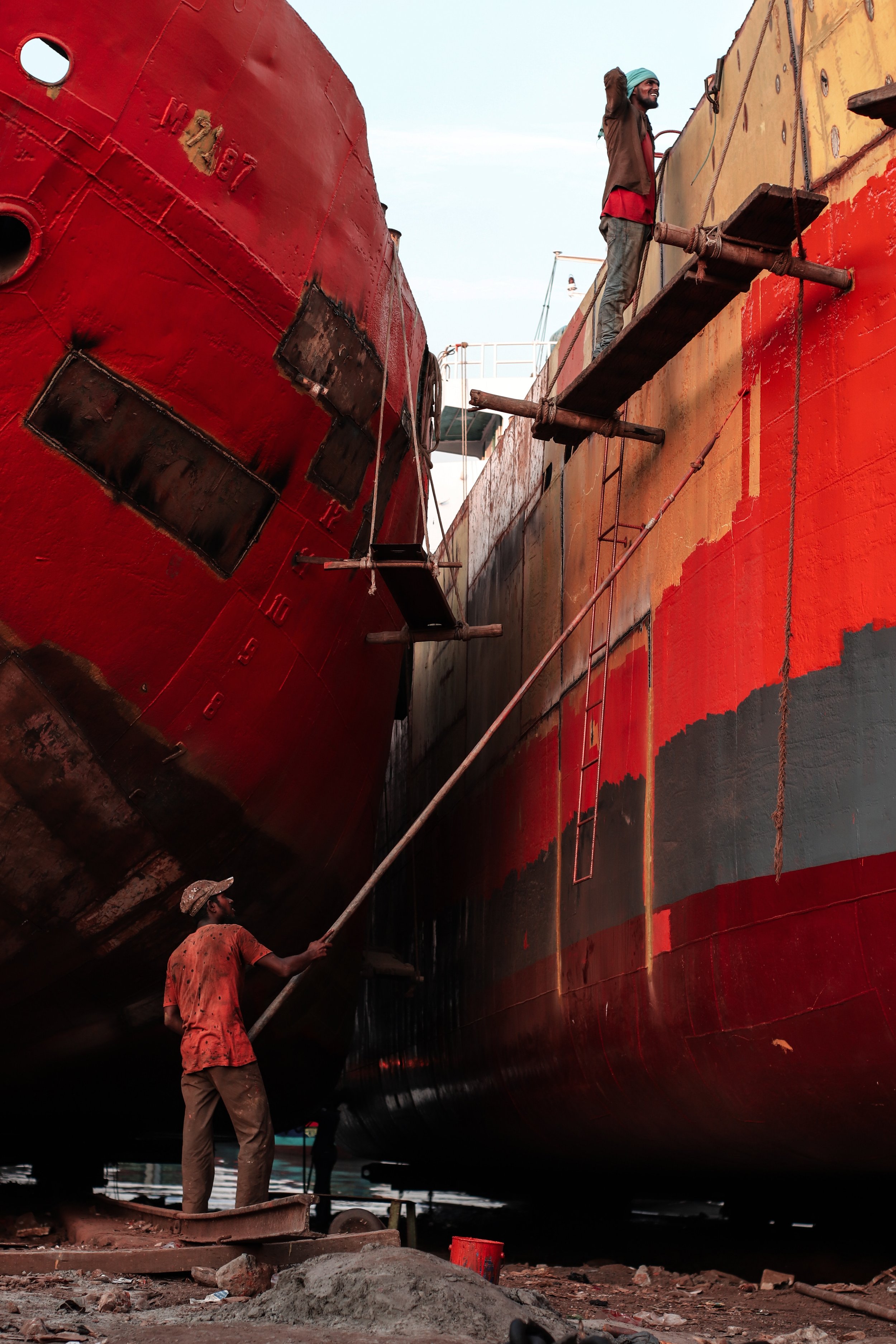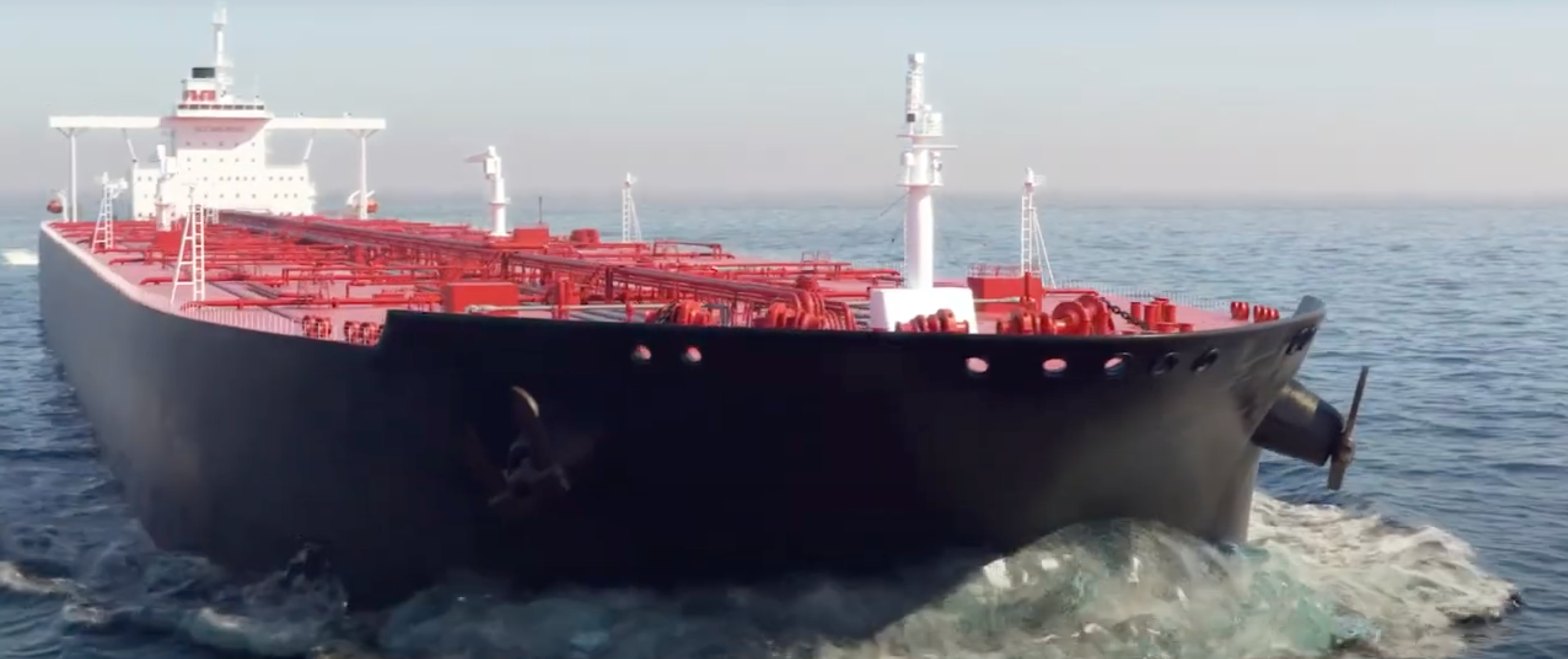Revolutionising Marine Coatings to Tackle Antifouling: Christina Linke from Clean Ocean Coatings
Did you know that the industry standard coating for marine vessels, antifouling paint, is toxic? Most antifouling coatings contain biocides to help prevent the growth of marine organisms (biofouling), and are designed to self-erode when organisms eventually do take hold. But one German startup has developed a unique alternative solution with commercial shipping vessels in mind.
For the seventh episode of our Pitchfest 2022 Series on the Ocean Impact Podcast, we chatted to Clean Ocean Coatings CEO and Co-founder Christina Linke about their unique biocide-free, toxin-free, hard coating. And how they hope to address the issue of antifouling pollution within the resistant-to-change commercial shipping industry.
Clean Ocean Coatings is developing the biofouling management of tomorrow, to ‘revolutionise the commercial shipping industry’ and contribute to healthy oceans.
The Berlin-based startup was celebrated as a Finalist in The Ocean Impact Pitchfest 2022, and was selected from a diverse range of submissions from 38 countries around the globe.
Video: This successful pitch video that saw Clean Ocean Coatings announced as a Pitchfest 2022 Finalist.
So, how did Clean Ocean Coatings come to be?
Christina - a food scientist by training, with a PhD in Beverage Science - realised at a certain point in her career that she was discontent. That what she would’ve really loved was to be a Marine Biologist. She decided to find her way into oceanology or marine biology somehow, and started attending industry conferences. It was at one of these that she was introduced to - and flabbergasted by - the problem of antifouling coatings, and also a possible solution. But there was a catch…
”It was like ‘Yeah we do have this solution. But somehow at the moment it looks like it will be kept in the drawers’ And I’m like…no! We need to try this”
As it happens, the woman presenting the solution was the former boss of her future co-founder.
Then COVID hit, and it was many video calls later until they finally met again in person and Christina was introduced to her now co-founder and CTO Patricia Griem, who’d been working on the research project for eight years. They decided to build their solution into a business, and it 2022 they entered The Ocean Impact Pitchfest and their first accelerator: and the rest is history!
Their timing couldn’t be better: with the global commercial shipping fleet growing to over 90,000 vessels in 2022, and increasing restrictions on antifouling paint, alternatives to harmful antifouling coatings have never been needed more.
What is BIOFOULING?
As Christina mentions in the epsiode: where there is water, there is life. Biofouling or ‘biological fouling’ is the unwanted growth of organisms on surfaces submerged in natural water, like ship and boat hulls.
It can range from microorganisms like biofilms and bacterial slimes, to large calcareous macro-organisms like barnacles, tube worms, zebra mussels, mollusks, etc. To non-calcareous organisms like algae and seaweed.
HOw is biofouling managed currently?
The most-used method of managing biofouling is antifouling paint. Antifouling paint forms a toxic barrier between the hull and the water in order to prevent biofouling growth. In addition, many of these coatings are self-eroding by design, so that when organisms eventually do take hold (and they do) they ‘shed’ off with the paint…
…into the ocean
WHY is ANTIFOULING paint A PROBLEM?
Christina discussed some of the issues with antifouling paint:
Antifouling paint can contribute to microplastic pollution: Most antifouling coatings are self-eroding by design so that, as the coating erodes, it takes any accumulated biofouling with it. One study predicts that perhaps 3.7% of the 1.5m tonnes/year of primary ocean microplastics are from ship and yacht coatings. This pollution ends up in ocean ecosystems where it can be ingested by animals, and even end up in our food!
Antifouling paint can leach toxic chemicals into the ocean: Antifouling paint contains biocides (such as copper, zinc, etc) which aim to prevent life growing on the coating. But these toxins can also leach into the ocean, having negative consequences for marine habitats and polluting water systems.
Even the strongest biocides don’t stop biofouling: Despite the toxic nature of antifouling paint, organisms still grow on the hulls of vessels, and can still be transported. In Australia, up to 75% of invasive aquatic species are thought to come in as biofouling on hulls. This disrupts native habitats, threatens native species, overwhelms vulnerable ecosystems, and more.
Occupational risks to dockyard workers: The rolling, spraying, and traditional methods of sandblasting involved in prepping, resurfacing, and painting ships with antifouling coatings can be extremely hazardous to human health. According to Christina, much of this work is done in Asia, sometimes without protective clothing. And skin exposure, or even inhalation, of harmful compounds is possible even with safety gear.
CLean Ocean Coatings
Clean Ocean Coatings has developed a unique technology that combines the advantages of ceramics and polymers for a uniquely smooth coating that is easy to clean, biocide-free, and solvent-free.
The coating is hard, not self-eroding like antifouling paint. And because the coating is solvent-free, there are no micropores from evaporating solvents, which creates the smooth surface that makes it harder for microorganisms to attach.
Clean Ocean Coatings technology doesn’t prevent biofouling growth, but rather makes it easier to clean. Barnacles for example, can simply be wiped off. This makes the coating perfect to be used in conjunction with other emerging cleaning technologies.
A generated model from Clean Ocean Coatings’ pitch video.
Other BENEFITS of clean ocean coatings
In a hard-to-disrupt, unwavering industry like commercial shipping, it’s not enough to just save the ocean. Solutions also have to impact the bottom line. And Clean Ocean Coatings have delivered on this too.
According to their website and pitch video, their solution:
produces less friction, creating fuel savings of around 6%
offers 3x higher durability than conventional antifouling products
requires half the number of coating layers, meaning it can be applied twice as fast
And they estimate that all of this can result in cost savings of up to €600,00 euros: per ship, per year.
A test patch of Clean Ocean Coatings technology
Advice for startups
Clean Ocean Coatings have encountered unique challenges based on both the industry they are trying to change, and their academic backgrounds. So, when asked if she had any advice for other startups or entrepreneurs, Christina offered some absolute gems.
Network network network
“Network network network…especially for the shipping industry, it’s very small….you can’t just reach out to a million people and hope that a few take you through… Create good relationships, and get introductions to relevant people and stakeholders.”
Better done than perfect
“Better done than perfect. Both coming from academia, we had a focus on perfectionism before. I had to leave that behind very fast! We had to focus and go ‘no no it’s enough’ it’s good. Moving forward!
Listen and Watch
New episodes of the Pitchfest 2022 Series will be releasing each week. Follow the Ocean Impact Podcast wherever you get your podcasts, or subscribe and watch on Youtube.










